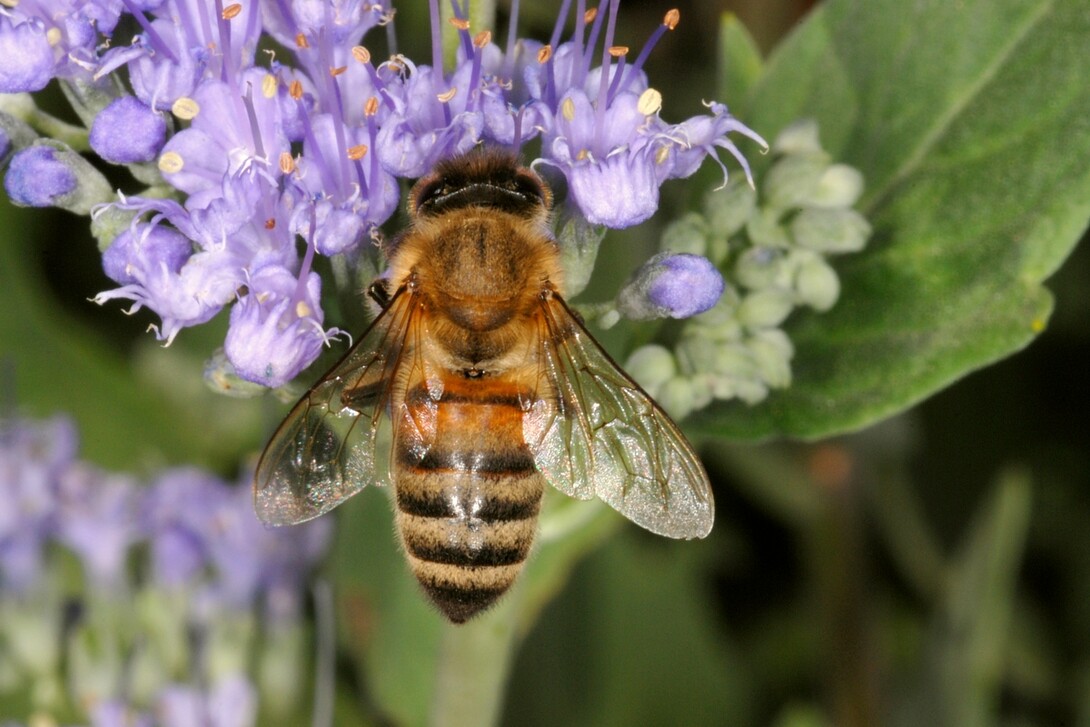
America’s honey bees continue to die off in disturbingly high numbers, despite a recent report that Colony Collapse Disorder, the mysterious ailment that has plagued honey bees in recent years, seems to have abated.
“Bee die-off is still incredibly high,” said Erin Ingram, a graduate research assistat at UNL who studies honey bees. “We are discovering that no single factor is responsible for CCD and that many factors are impacting bee health at this point.”
The New York Times published an Op-Ed on Sept. 25 by beekeeper and author Noah Wilson-Rich, who said data from the past three years shows “no conclusively documented cases of CCD in the strict sense.”
He declared CCD “essentially over.”
Ingram said it’s speculative to say CCD has subsided. She said beekeeper surveys continue to list CCD as a responsible factor in colony loss. In 2012, the USDA reported an average 33 percent average annual colony loss since the first reports of CCD, with about 1/3 of colony loss attributed to CCD.
Wilson-Rich reported that annual colony die off remains at about 30 percent a year, about twice the normal rate of loss.
“Bees are still dying,” Wilson-Rich wrote. “It’s just that we’re finding the dead bodies now, whereas with CCD they were vanishing.”
Ingram agreed with Wilson-Rich’s call for continued vigilance against major causes of bee die-off, such as disease and parasites, agricultural chemicals and loss of habitat.
“Thirty percent die-off is not sustainable,” she said.
Though Nebraska’s major crops of corn and soybeans rely on wind, not insects, for pollination, the state’s apiarists serve alfalfa, melon and fruit growers, as well as supplying bees to pollinate crops in other states, Ingram said. According to the USDA’s Census of Agriculture, nearly 330 farms in Nebraska had bees in 2012, with nearly 45,000 colonies. The state ranked 11th in honey production with 3.3 million pounds.
Nationwide, the number of farms with beehives increased by 37 percent from 2007 to 2012, while honey production declined 6 percent. California was the leading honey-producing state.
In some areas, wild bees and other insects play a significant role in pollinating crops. In areas of monoculture, where the same crop is grown for acre upon acre, wild bees can’t survive the season because they run out of food after blooming ends. Farmers cannot depend on fluctuating wild bees populations to adequately pollinate their crops from year to year and therefore rent migratory honey bee colonies for pollination services.
Yet the stress of moving hives makes honey bees more susceptible to parasites and disease, Ingram said.
What makes Colony Collapse Disorder so puzzling is that tens of thousands of worker bees disappeared from their hive without explanation, leaving the queen, younger worker bees, larvae and food behind. Without worker bees to bring more food to the hive, the colony eventually died.
Though the jury is still out, some scientists theorize that a certain class of pesticide, called neonicotinoids, causes the bees to become disoriented and lose their way back to their hive, Ingram said.
The first cases of CCD were reported about eight years ago. Today, it’s more likely to find die-offs caused by a mite called Varroa destructor, or by viral or bacterial diseases introduced by the parasite.
While treatments exist for small operations or hobby beekeepers to reduce mite numbers, they are time sensitive, making it difficult and expensive for large commercial beekeeping operations to manage for mites and other afflictions in a large number of colonies.
“We’re still seeing those high losses, but the majority of current colony losses do not align with CCD symptoms and instead are the result of known ailments such as parasitic mites, diseases, poor nutrition or a combination of factors,” Ingram said. “We are still searching for sustainable solutions to these ailments.”







